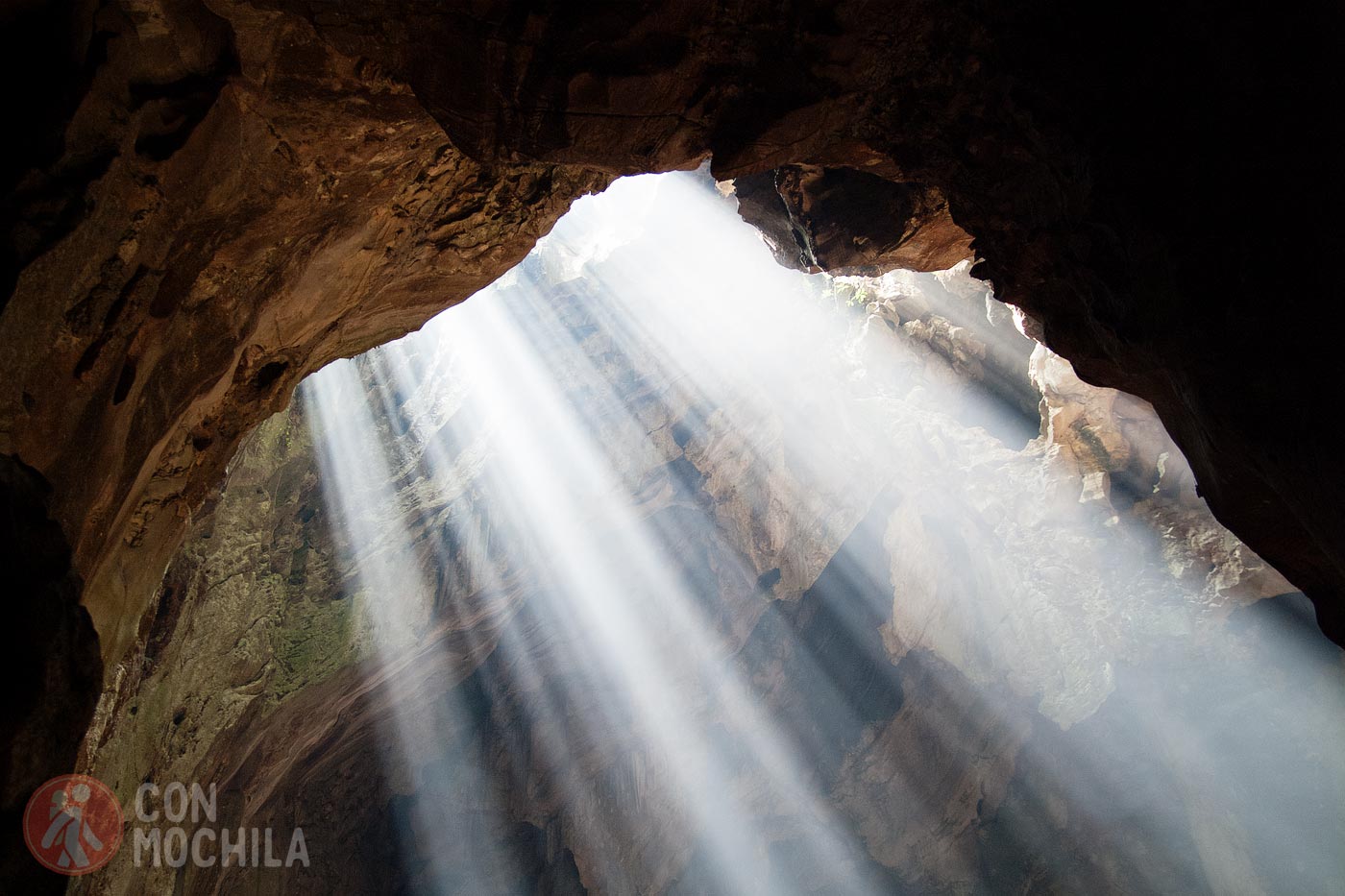Seen from afar, they look like volcanoes rising above the town, but inside they contain caves that, instead of lava, contain Buddha figures. We’re talking about the Marble Mountains of Danang, halfway to Hoi An, Vietnam.

In reality, it consists of five piles of marble rock rising from the plain, which were no longer exploited and became a tourist attraction, allowing people to make pilgrimages to them.
Today, many tourists visit the Marble Mountains on a day trip from Danang (to the north) or Hoi An (to the south). Here are some links in case you want to book a tour:
According to Vietnamese folklore, each Marble Mountain represents one of the five natural elements (water, wood, fire, metal, and earth), and each is named accordingly in Vietnamese.
Of them all, Thuy Son (Water Mountain) is the largest and most famous, known for its caves and sanctuaries. There are two different paths to access the caves, allowing you to enter through one and exit through the other. Entrance fees are paid at the beginning of the trails.
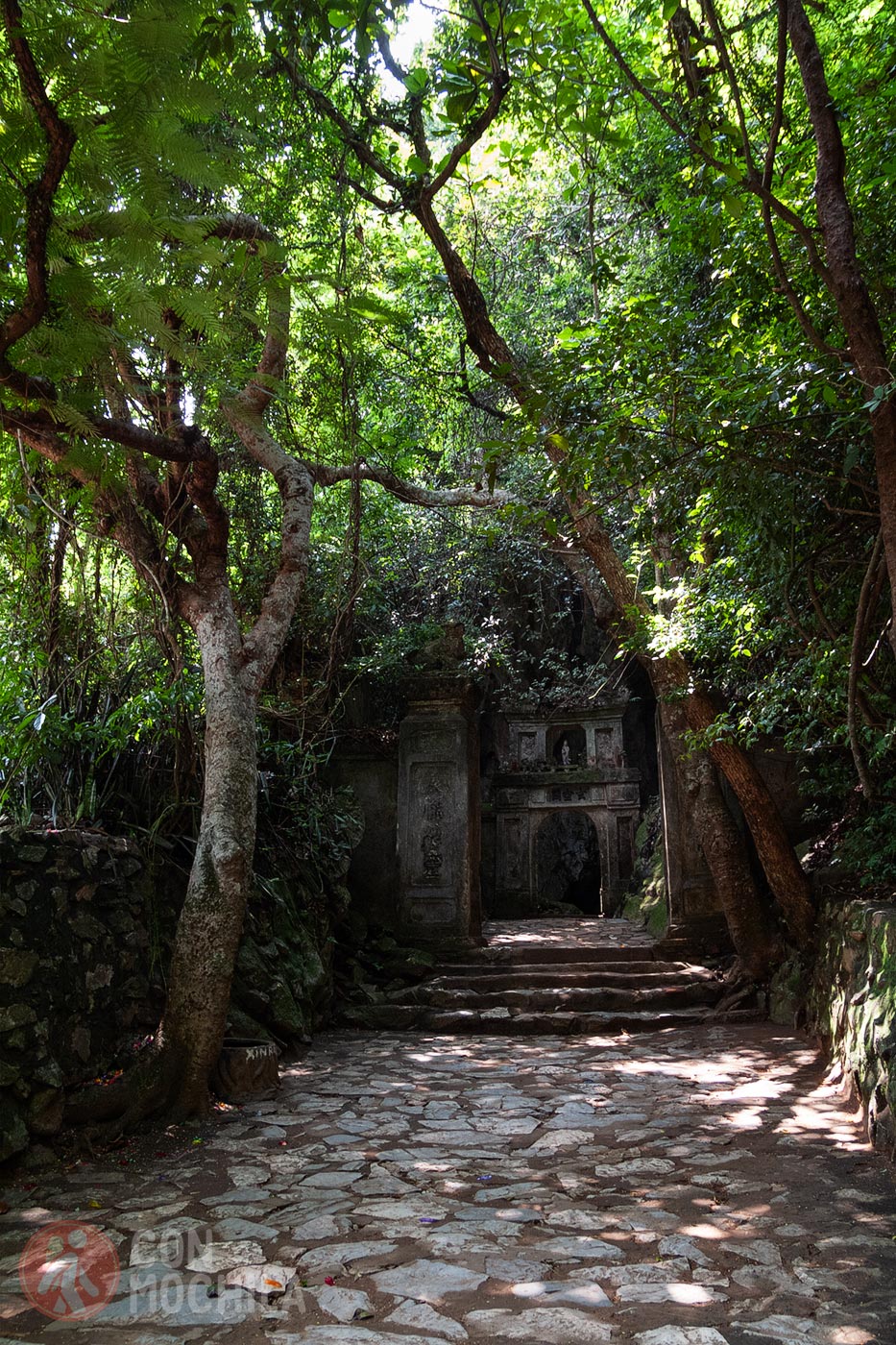
At the entrance of the trail, you’ll find Tam Thai Tu Pagoda, restored by Emperor Minh Mang in 1826. This beautiful complex features an impressive entrance gate, monks’ residences, five small pagodas, and two chapels.
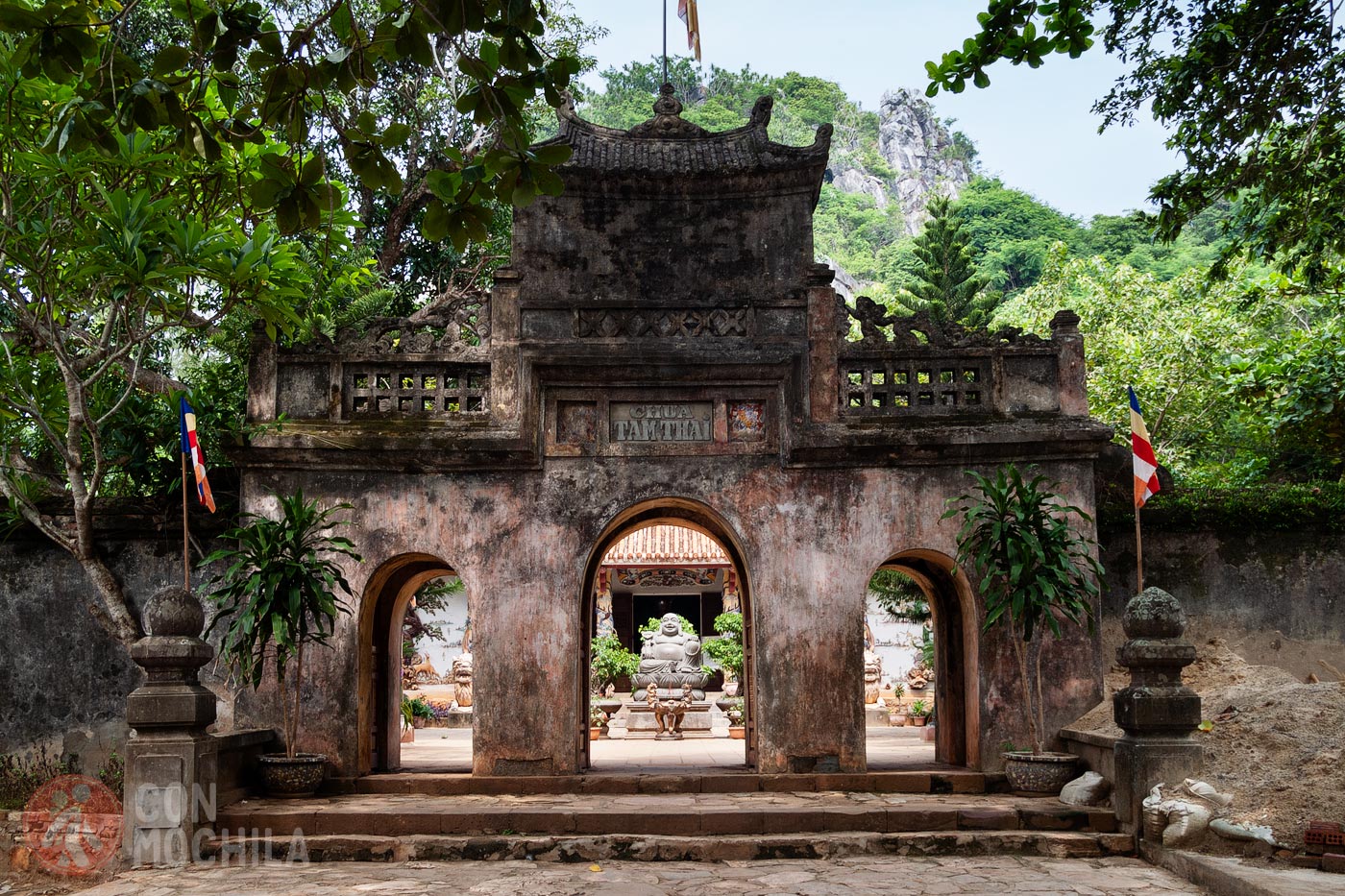
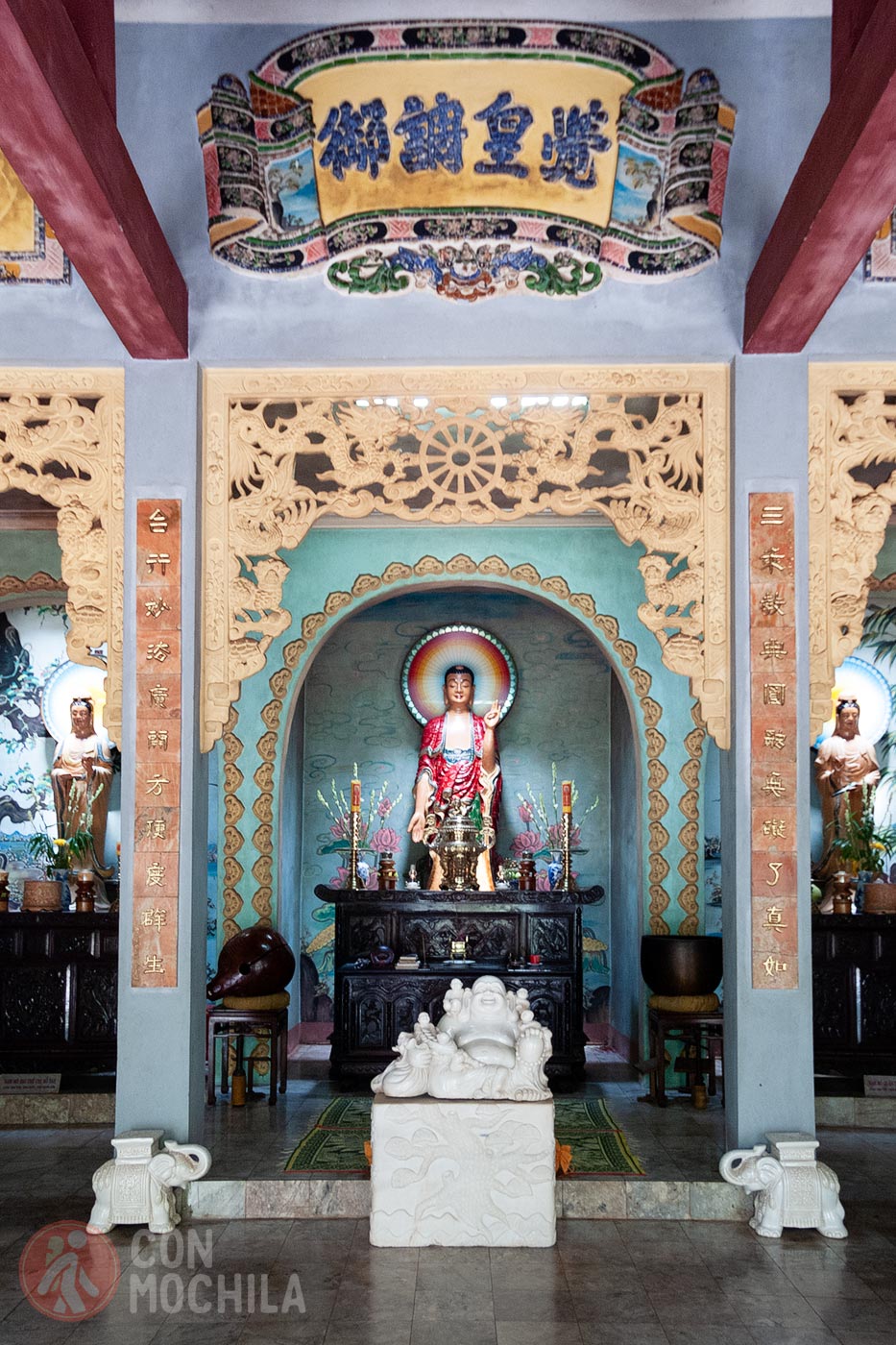
Following the stairs on the left, you’ll reach Vong Giang Dai, a viewpoint offering stunning panoramic views of the other Marble Mountains.
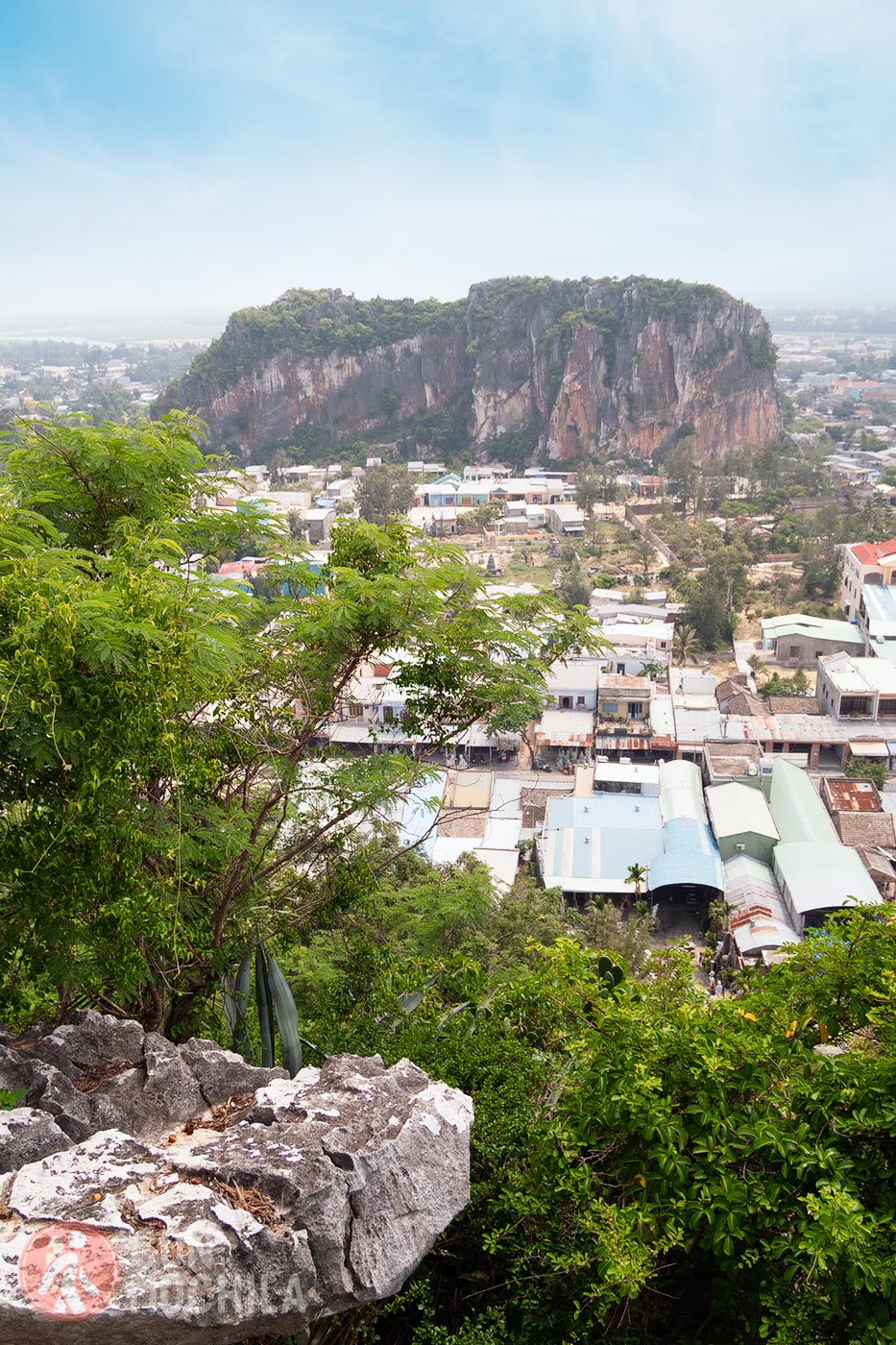
This pagoda is home to monks’ quarters and a fascinating statue with an enormous tongue.
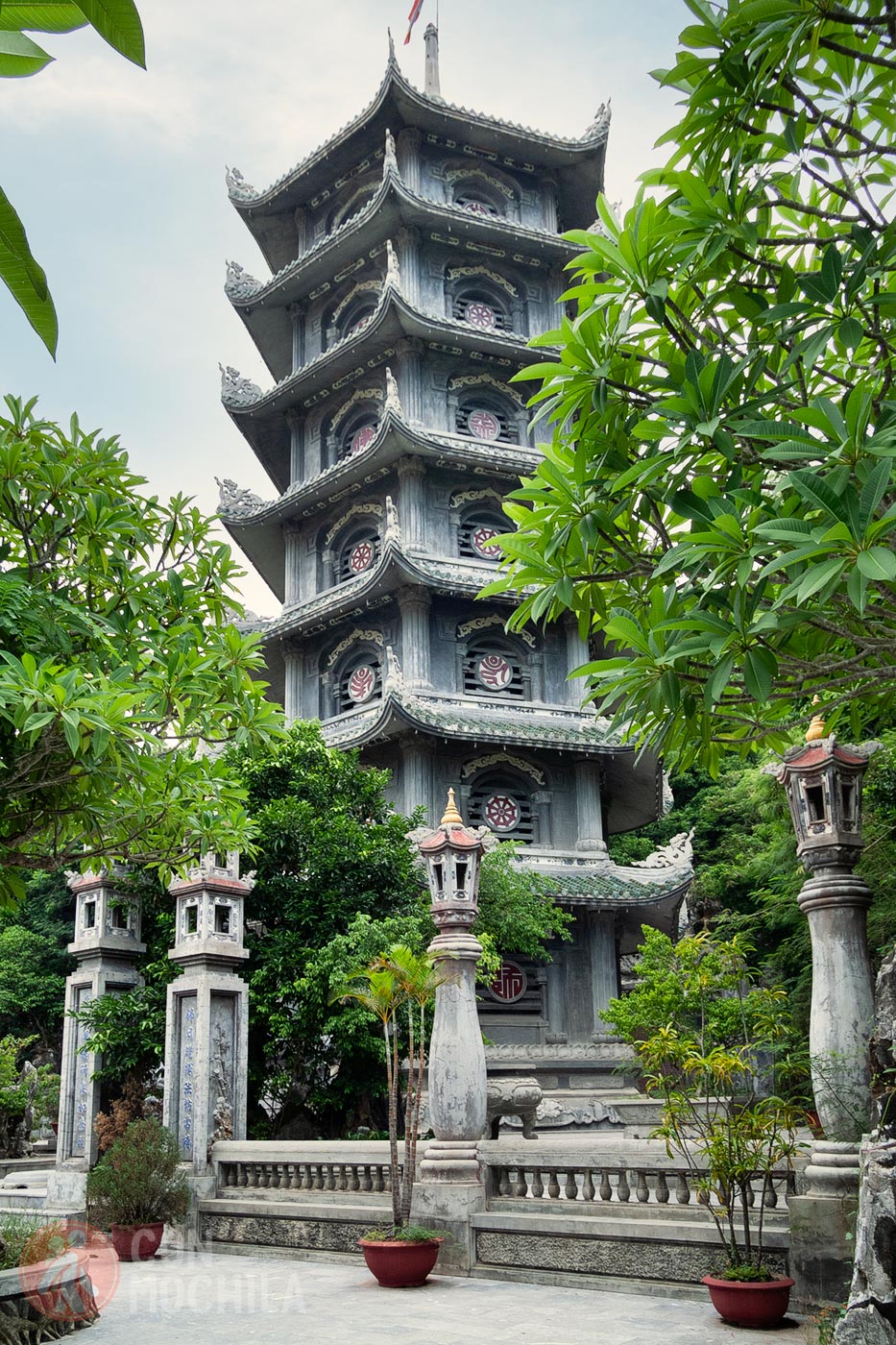
At the entrance of Van Thong Cave, there is a massive cement Buddha statue. However, the most intriguing feature is the natural chimney at the back, which can be reached by crawling through a narrow tunnel.
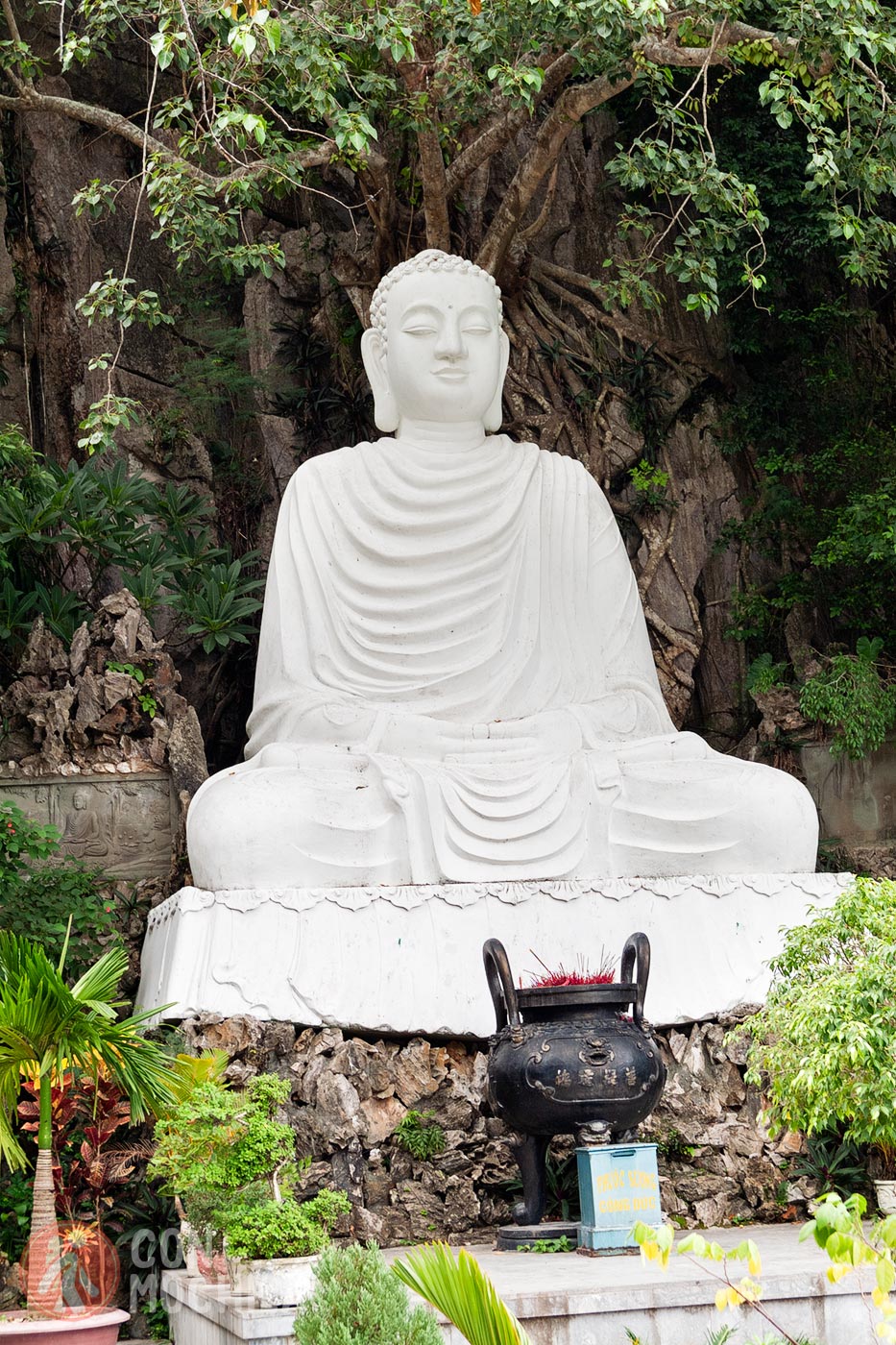
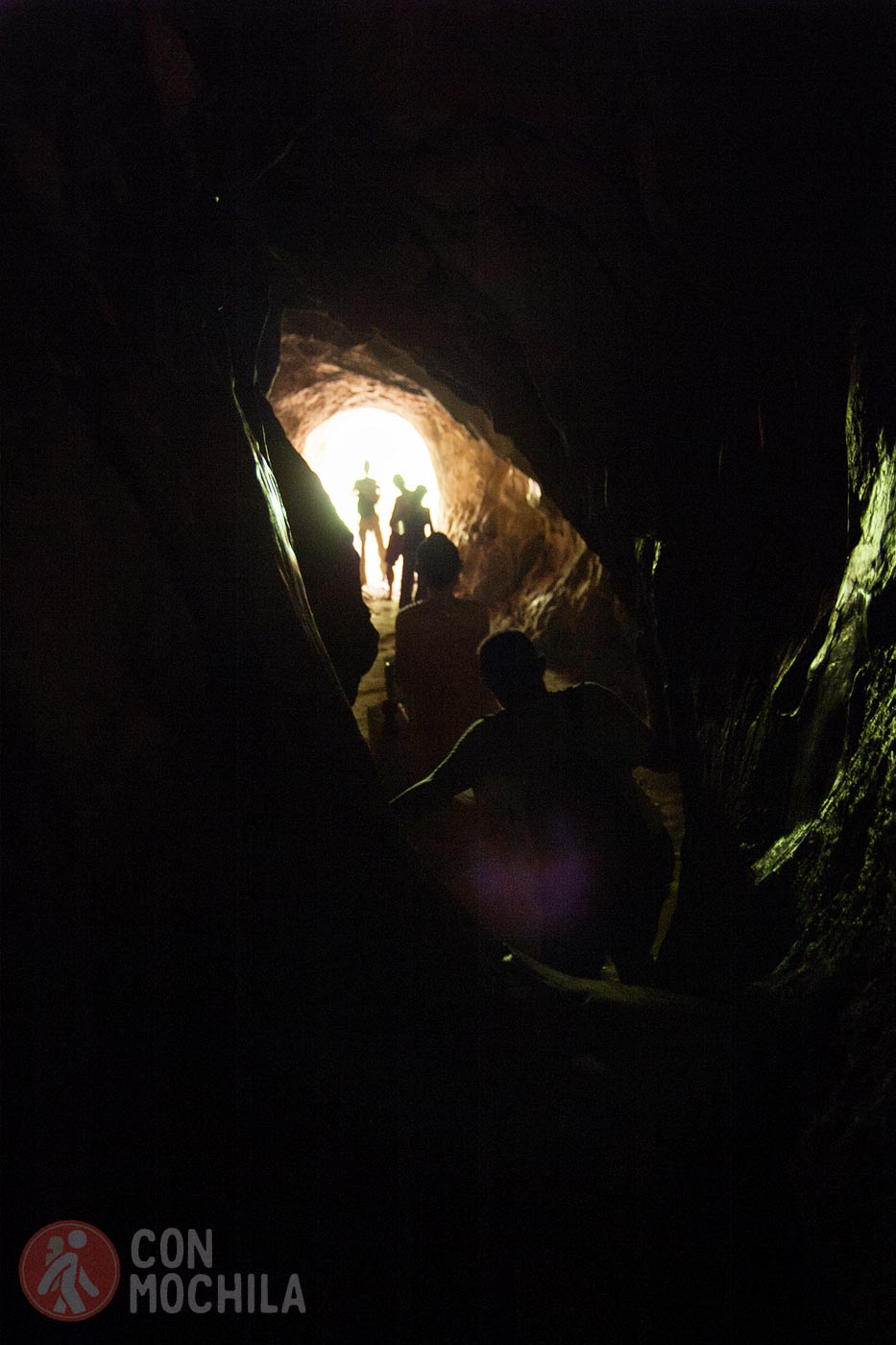
Finally, there are natural passageways connecting the caves. As you exit the canyon, a path leads to Linh Nham, a relatively tall cave with an altar inside.
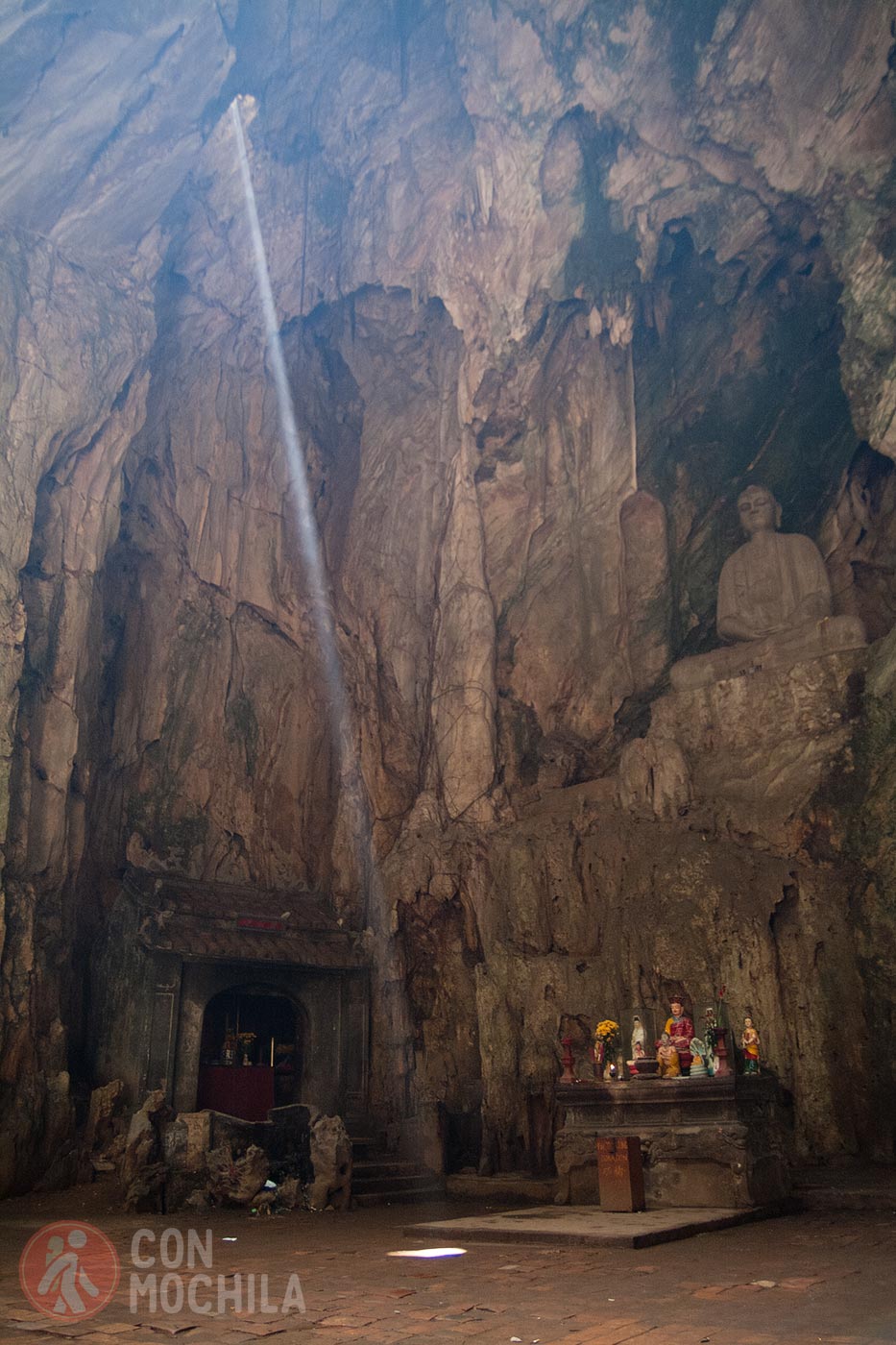
Next, we will pass by Hoa Nghiem, a small cave that houses a Buddha statue inside.
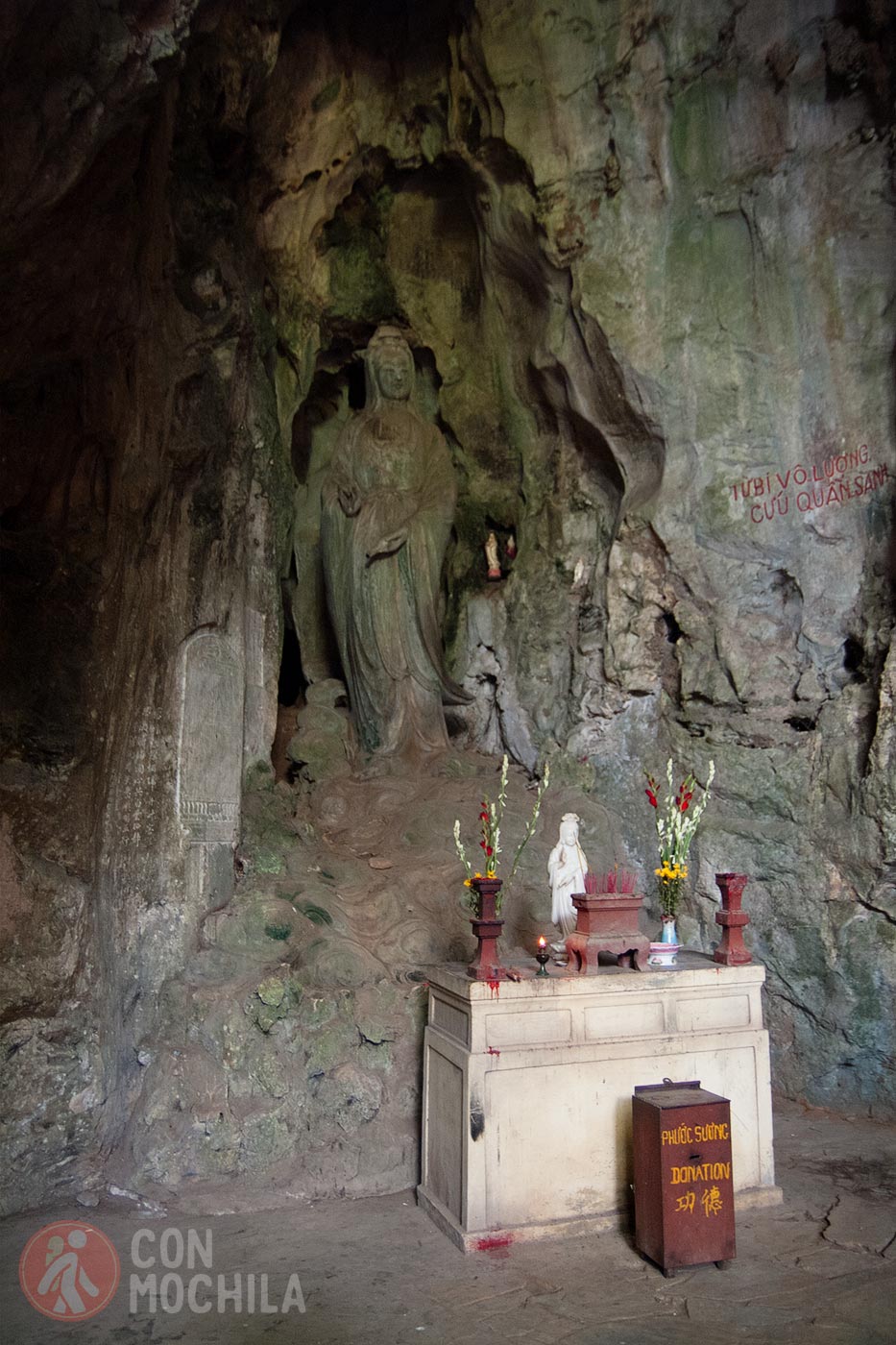
Following the left-side path, you’ll arrive at Huyen Khong Cave, a cathedral-like cavern lit by natural openings at the top, allowing sunlight to stream in. The entrance is guarded by a pair of administrative mandarins and a pair of military mandarins.
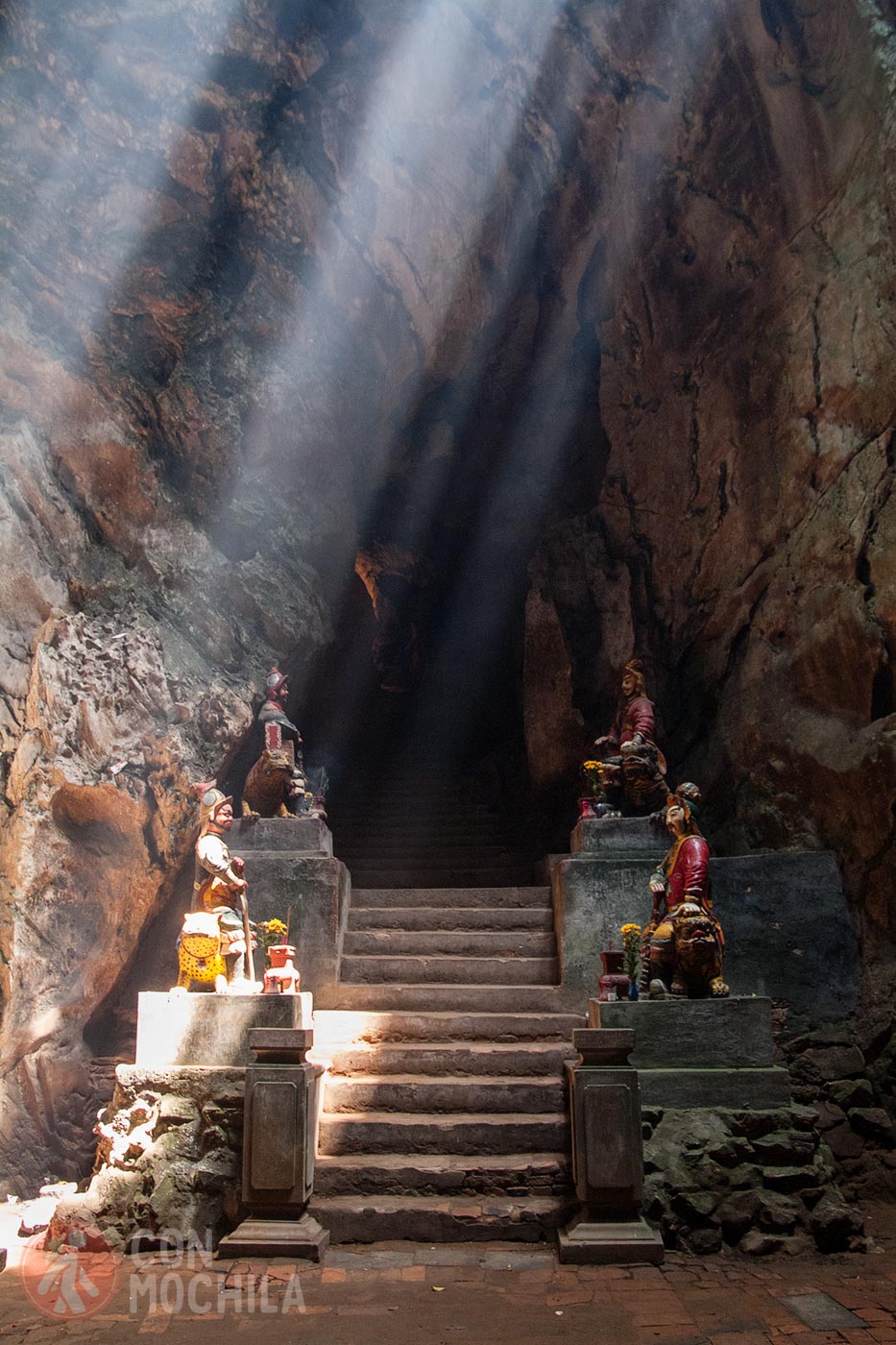
During the Vietnam War, Huyen Khong Cave was used as a secret base and later converted into a field hospital for Vietnamese revolutionaries.
